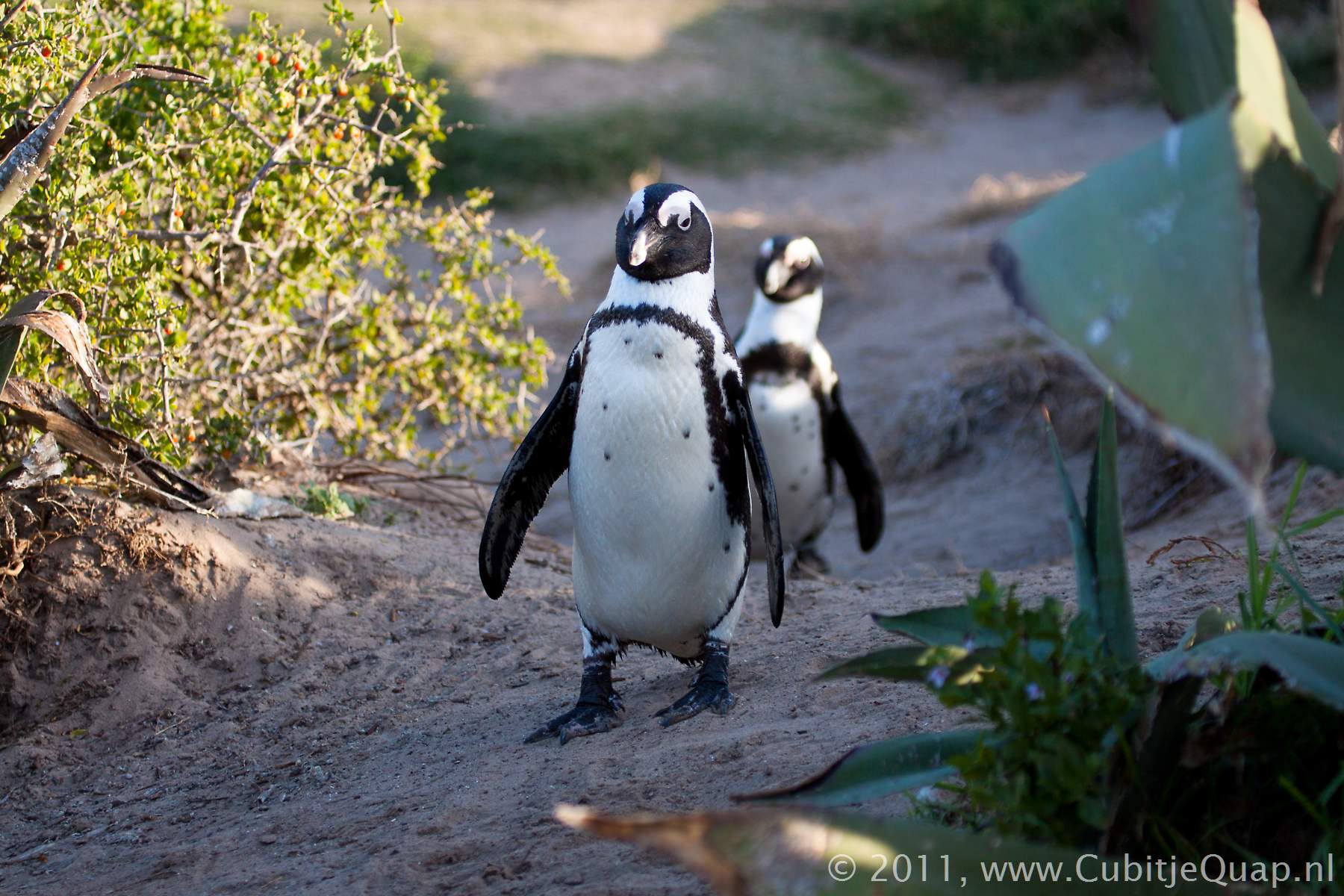Penguins Information page
Description
Flightless marine seabirds, related to petrels and shearwaters, but fossil records show divergence from relatives more than 40 million years ago. They are gregarious, all subspecies breeding in colonies and they typically forage for fish in pods (clustered together). usually penguisn moult all feathers simultaneously, rendering them land-bound for about 20 days and forcing them to live off stored fat.Penguins are unique in having uniform, scale-like, feathers over the whole body. The plumage in very dense and does not trap air. The wings have become modified into flippers for underwater propulsion, with the wingbones being complressed or flattened for 'underwater flight'. Unlike other avian divers, the wings, rather than the feet are used for swimming. The head, feet and tail are used for steering. The feet are hard and leathery, the toes are fully webbed. The tail may also be used to assist with balance when standing upright on land.
They primarily eat fish prey, which is caught by underwater pursuit and swallowed immediately.
Only the African peguins breeds in the region, they breed in burrows, dug in the sand, under bushed etc. They lay two white eggs. Incubation and feeding of the chicks is done by both parents. The chicks are fed by regurgitation. The adults have the ability to delay digestion of food, because sometimes they overnight at sea on foraging trips. When chicks are older, provisioning trips may take up to 5 days.
Scientific names
Spheniscus = a little wedge, perhaps in reference to flippersBirds in this category
Interesting links
Wikipediafatbirder.com

